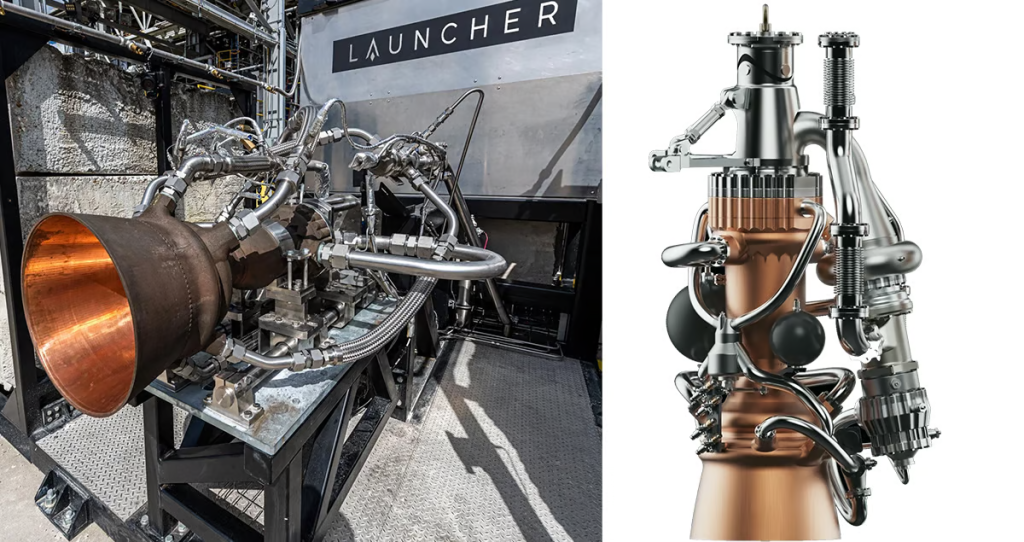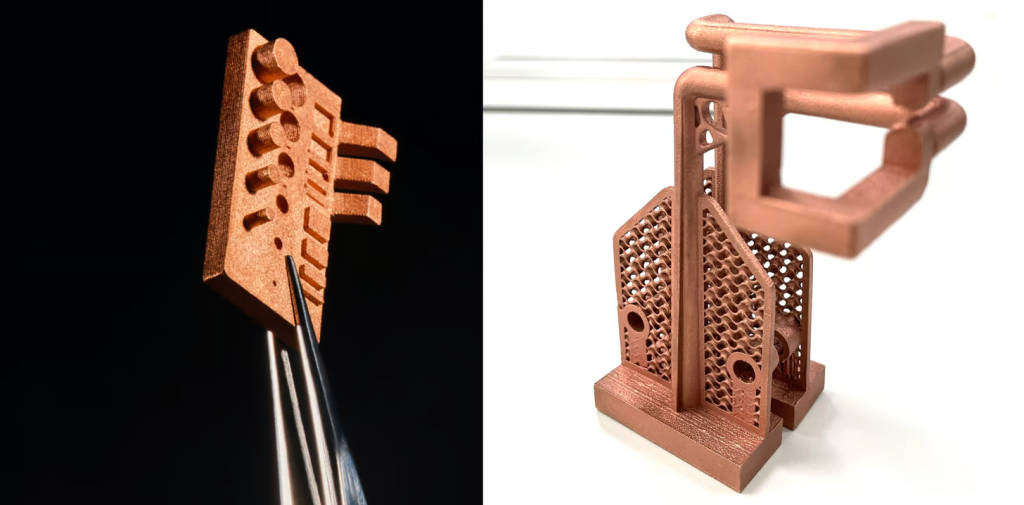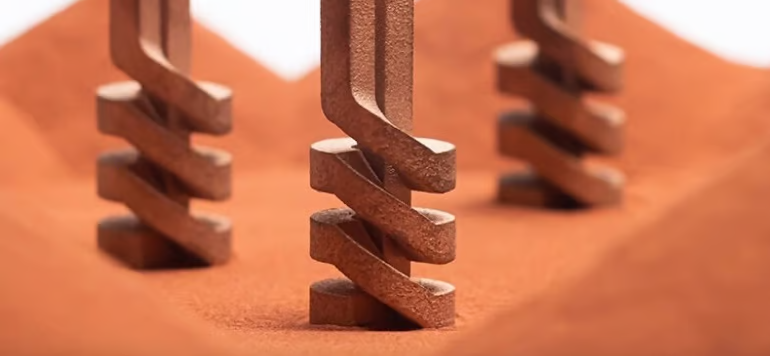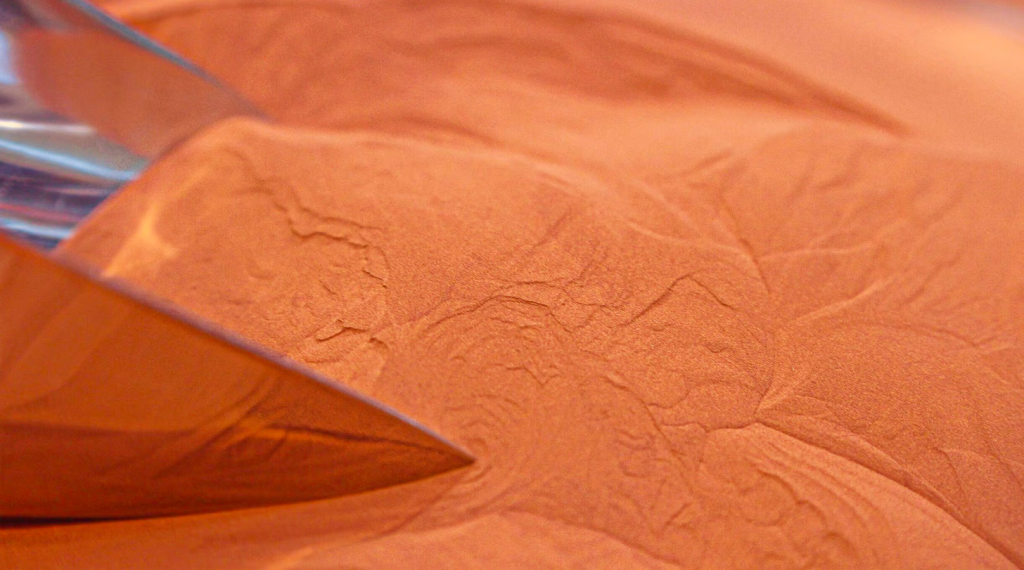Copper is one of the fastest-growing areas of metal 3D printing, sought after for everything from electric motors to heatsinks.
Previously, it was a challenge to 3D print with copper because of the metal’s reflectivity and high heat conductivity. Advances in printers and materials have largely met those early challenges. Today, 3D printed copper propulsion systems send rockets into space, 3D printed copper heatsinks keep CPUs cool, and 3D printed copper coils boost electric motor performance.

Why 3D Print Copper?
Copper has always been a highly useful metal due to its ability to conduct heat and electricity, resist corrosion, and even kill bacteria and viruses. Demand for complex copper parts is growing as 3D printing opens up even more applications and possibilities for this metal.
3D printing (also known as additive manufacturing) enables the production of exceptionally complex shapes, fine detail, internal structures, and lattice infills not possible with any other type of metal manufacturing. These features reduce weight, increase efficiency, and reduce manufacturing and assembly time. 3D printing requires less raw material — and wastes less — than other manufacturing methods, plus multi-part assemblies can be 3D printed as a single unit, which also reduces the amount of raw material while boosting efficiency. For companies interested in 3D copper printing, reducing raw material costs is critical.
If you already manufacture custom copper parts, you may be able to dramatically lower production costs while optimizing part performance with 3D printing. There’s also the major benefit of producing prototype copper parts for testing without the time and expense of mold making and tooling required for other metal manufacturing methods.

Key Applications for 3D Printed Copper
- Heat sinks
- Heat exchangers
- Induction coils
- Electronics
- Bus bars, hair pin stators, single coils
- Antennas
- RF shielding
- Radio frequency quadrupoles / wave guides
Copper Powder Bed Fusion 3D Printers

Powder bed fusion is the most popular metal 3D printing method, Because copper is highly reflective, processing the powder with lasers presented a hurdle to manufacturers. However, this technology and the materials have evolved to meet the challenge.
3D printer maker, developed an industrial green laser that makes it possible to 3D print materials, such as copper, copper alloys, and precious metals, that are difficult to process with infrared wavelengths. Blue laser technologies are also showing promise for copper processing.
metal 3D printing powder bed technologies, laser powder bed fusion (LPBF) , work by spreading a thin layer of copper powder on top of a platform inside the printer. The powder is heated while lasers trace the first layer of the part. As the particles in the layer are fused, the platform lowers slightly into the build chamber with fresh powder deposited on top, and the process repeats. Some of the copper powder left over from the process can be recycled for use in the next print.
Copper Material for 3D Printing

Raw copper or copper alloy material will be a large part of your 3D printing cost,so it’s good to know what your options are. copper powder for additive manufacturing is specifically processed to form rounder particles than powder used in other metal manufacturing.Other factors, such as low interstitial content and the right flowability, are also important.
Because of the difficulty of tuning your printer to a specific metal powder, it’s more common for users to stick with “approved” powders from your manufacturer to avoid the upfront work.
